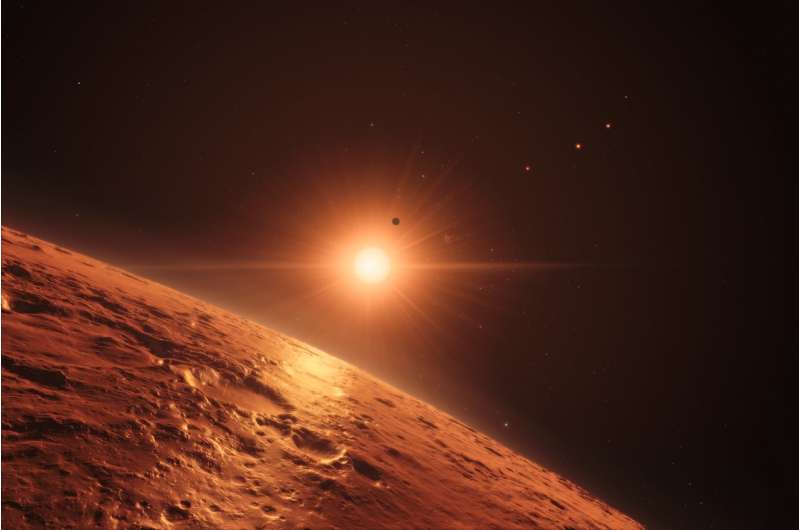July 23, 2018 report
Solar model used to predict exoplanet's ability to withstand stellar wind

A team with members from institutions across the U.S. has used an existing solar model to predict the ability of exoplanets to withstand localized stellar wind. In their paper published in Proceedings of the National Academy of Sciences, the group describes their approach and how they think it might help with the search for life in places beyond Earth.
As the search for extraterrestrial life continues, space scientists look to improve the tools that are used to conduct such searches. In this new effort, the researchers have focused on looking for ways to measure a planet's ability to withstand the stellar winds coming from a star. In so doing, they have turned to a tool previously used to study the sun.
The tool is the Alfvén Wave Solar Model (AWSoM) and has been used to simulate the behavior of the sun's corona. The researchers tweaked it for use in studying stars at the center of other star systems in the Milky Way galaxy—and by extension, the stellar winds that make their way to the planets in those star systems. In their study, the researchers focused on TRAPPIST-1, a star system that made headlines three years ago when scientists reported that it harbors seven Earth-sized planets, three of which reside in the Goldilocks Zone. Of those three, named e, f and g, the researchers were most interested in g, because prior work had suggested of the three, it holds the most promise for hosting life. One test of its suitability would be checking to see if the planet would be able to withstand the stellar winds. We here on Earth are protected from solar winds by both a magnetic field and our atmosphere.
To predict the impact of the stellar winds on g, the researchers added influences to the AWSoM, such as star age (a factor in heat production) and then allowed programmed it to simulate stellar wind. The researchers found that life did appear possible, so long as it was at least 125 miles below its ionosphere—at points below that, the atmosphere could conceivably provide enough protection to sustain life.
More information: Chuanfei Dong et al. Atmospheric escape from the TRAPPIST-1 planets and implications for habitability, Proceedings of the National Academy of Sciences (2017). DOI: 10.1073/pnas.1708010115
Journal information: Proceedings of the National Academy of Sciences
© 2018 Phys.org




















